An old Tibetan saying translates to, “The highest art is the art of living an ordinary life in an extraordinary manner”. In our seemingly ordinary lives, it is up to us to make those extraordinary choices that breathe life into our existence. So, let’s make another one of these extraordinary choices and pack a bag to travel to the land of the high passes – Leh.
Introduction to Leh
Leh is the rustic land with the occasional hints of greenery and surrounded by the brown-grayish Ladakh range. The elegantly flowing Indus river makes Leh a perfect postcard destination. Tibetan Prayer Flags dance in the thin air of Leh while flanking the sides of the roads. They are a visual treat & give a sense of peace. The warm locals, spicy momos, butter tea, and quaint markets make it even more special. Leh might be a cold desert but it has so much to offer. Its true magic can only be felt by being there, and witnessing the scenery with our bare eyes! In the distance, you will see a few snow-covered peaks calling you. urging you to climb to that summit. But be warned – Leh isn’t like any other destination in the entire world. It’s on every travel enthusiast’s bucket list and never fails to give an adrenaline rush.
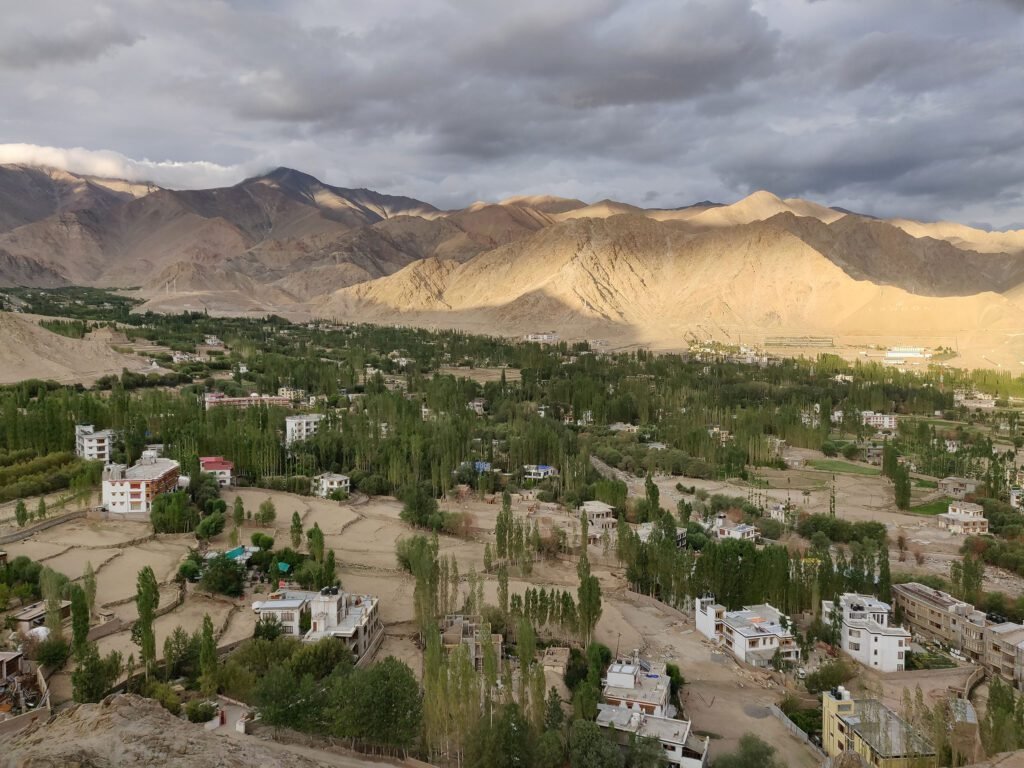
Where is Leh Located?
Leh is located in the Union Territory of Ladakh in the northern part of India. It’s connected via National Highway 1 to Srinagar and to Manali via the Leh-Manali Highway. The main town of Leh is located in the valley of the upper Indus River at an elevation of 3,520 meters and is surrounded by the soaring peaks of the Ladakh Range, which is a south-eastern extension of the Karakoram Range.
Things to do in Leh
1. Leh Palace
Leh Palace is the first thing on anyone’s list when they visit the main town of Leh. Also known as the Lachen Palkar Palace, it’s a magnificent structure overlooking the entire town of Leh. Leh Palace was in the 17th century by Sengge Namgyal, the King of Ladakh at that time. The nine-storeyed Leh palace had its upper floors inhabited by the royal family, while the floors below housed storerooms and stables. The mid-19th century saw the Dogra forces usurping control over Ladakh which forced the royal family to shift to the Stok Palace. This abandoned palace was left to natural ruin and therefore is currently under the care and restoration initiatives of the Archaeological Survey of India (ASI).


NOTE: Just a walking distance from Leh Palace, there are two more places of interest – Tsemo Castle and Namgyal Gompa. They are less preferred by tourists in Leh, but if you have extra time in hand, you can consider them.
Tsemo Castle is also of religious, historical, and cultural significance to the people of Ladakh. Namgyal Gompa is a Buddhist Monastery and houses a three-story high gold statue of Maitreya Buddha and ancient manuscripts and frescoes.
2. Hall of Fame
Hall of Fame is a must-visit for any Indian traveling to Leh, in order to pay homage to the brave soldiers of the Indian Army. It’s a museum, maintained by the army to remember the Indian soldiers who sacrificed their lives during various Indo-Pak wars. It also commemorates the Army’s role in the cloudburst relief of 2010. I personally find the Siachen Glacier section very insightful. It shares lots of information on the survival conditions of our brave soldiers at -50 degrees Celsius. You can also watch a 30-minute film that depicts various aspects of the Kargil war. A visit to the Hall of Fame indeed gives an emotional rush to patriotic Indians!
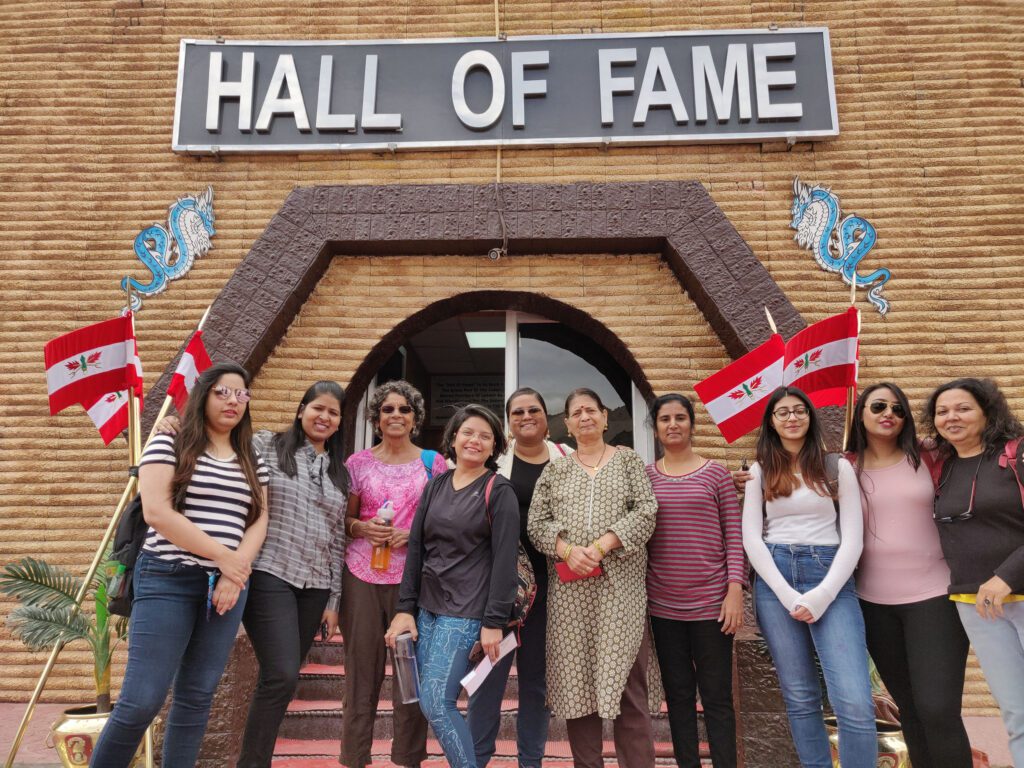
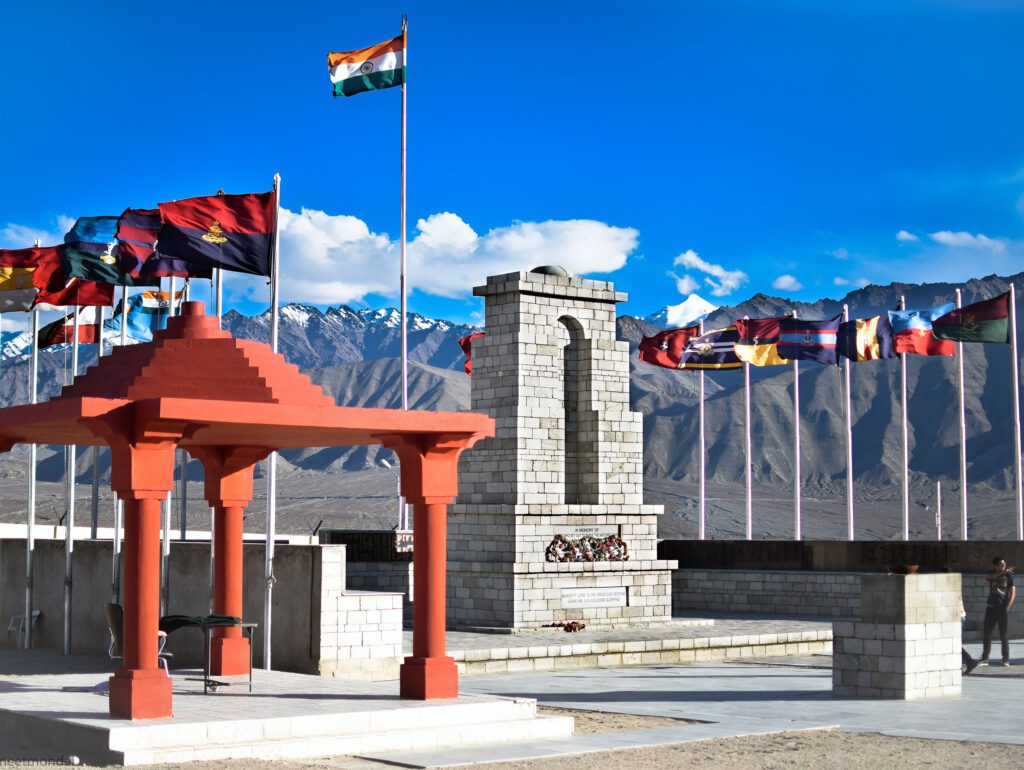
3. Shanti Stupa
Shanti Stupa is another marvel of Buddhist architecture and is just a sight to look at. Just imagine a pure white structure against the backdrop of the blue skies and grey mountains. Constructed on top of a hill in the Changspa region, this white-domed stupa was built by a Japanese Buddhist Bhikshu named Gyomyo Nakamura in the year 1999. In order to reach Shanti Stupa, you can take the road leading directly from Leh to the Shanti Stupa. There are some 500 odd stairs to the top. After climbing those treacherous stairs you are rewarded with a view that will make you forget all your fatigue. The Shanti Stupa is one of the best vantage points, offering a mesmerizing view of Leh town with the mountain landscapes in the backdrop. Try to reach in time for the sunset to get an even more gorgeous view.

4. Sangam Point
A 48-kilometer drive from Leh brings you to the village of Nimmu, where a magnificent view awaits you. There is a vantage point in the village from where you can see the confluence of the Indus River and Zanskar River. The word “confluence” literally translates to “Sangam” in Hindi. It’s a beautiful sight to behold. Due to various natural factors, the rivers constantly change their color as well as the force of their flow throughout the year. When the Zanskar river freezes in the winter, the popular Chadar trek takes place. You can experience walking on a frozen lake and seeing the waterfalls that have frozen mid-air. All things considered, this is a must-visit when you come to Leh.
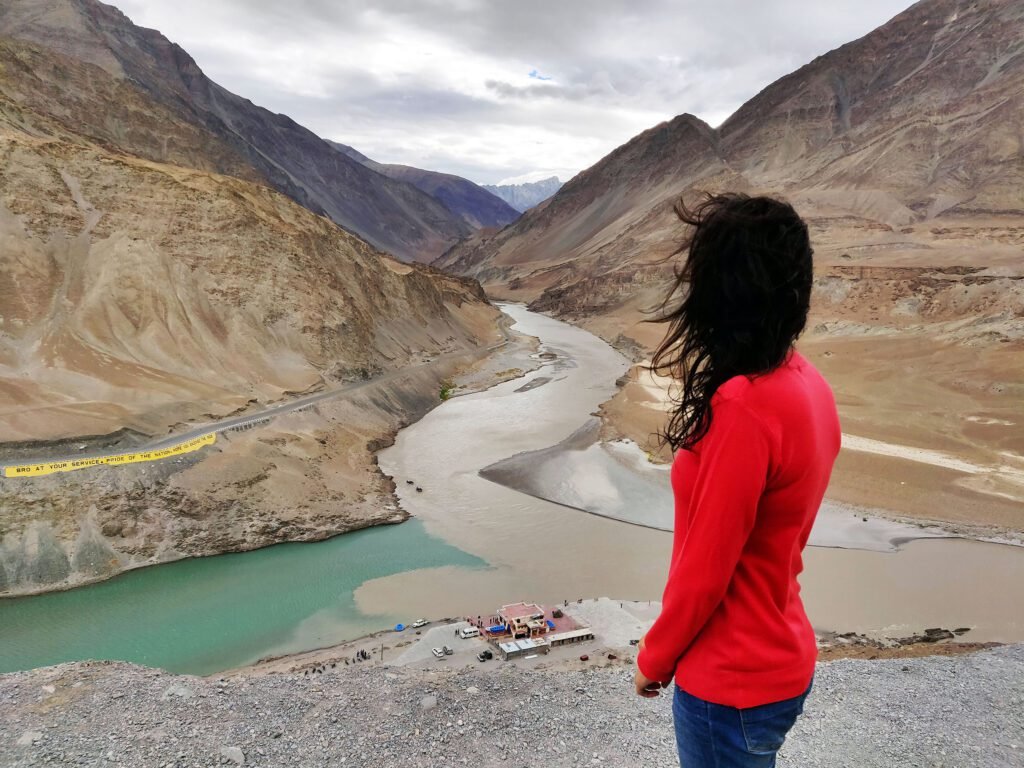
5. SECMOL School
Do you remember Phunsukh Wangdu (Aamir Khan’s character) from 3 Idiots? He played Sonam Wangchuk, a Ladakhi engineer who starts an innovative and sustainable educational institute in Ladakh. Sonam started the Students’ Educational and Cultural Movement of Ladakh (SECMOL) in 1988 near the Phey village in the Indus Valley. This institution has revolutionized the education system of Ladakh and it is a sight to behold. Constructed with a mix of traditional and modern architectural styles, SECMOL is a must-visit in order to broaden your horizons on education. Not just academic education, but students also learn life skills. Did you know that the students themselves manage the entire campus including growing their own food?

6. Gurudwara Patthar Sahib
Almost 25 kilometers from Leh on the Srinagar-Leh highway is the Gurudwara Patthar Sahib. It was built in the year 1517 to commemorate Guru Nanak Dev’s visit to Ladakh. This revered place is believed to be the spot where Guru Nanak Dev conquered a demon. Legend has it that when Guru Nanakji was meditating at this place, a demon had hurled a boulder at him in order to obstruct his prayers. But, as soon as the boulder was about to hit Guru Nanakji, it turned into soft wax and failed to harm him. Seeing this the demon then asked for forgiveness for his misdeed and Guru Nanakji forgave him. The boulder seems to have the imprint of Guru Nanak Dev’s body and the footprint of the demon. This boulder is on display at the Gurdwara Pathar Sahib, which is maintained by the Indian Army.

7. Alchi Monastery
Alchi Monastery built somewhere during the years 958-1055 CE is actually not a monastery but rather a monastic complex of temples in Alchi village located 65 km away from Leh. It is one of the most important Buddhist centers in the region. For the last 500 years, religion has not been practiced in the Alchi Monastery. Hence, it is no longer an active religious center and the monks from the Likir Monastery look after it. Yet, there is still much cultural history within the walls of this monastic complex and the surroundings of the Alchi Gompa offer a very welcoming atmosphere for visitors with small restaurants, tea stalls, and souvenir shops.
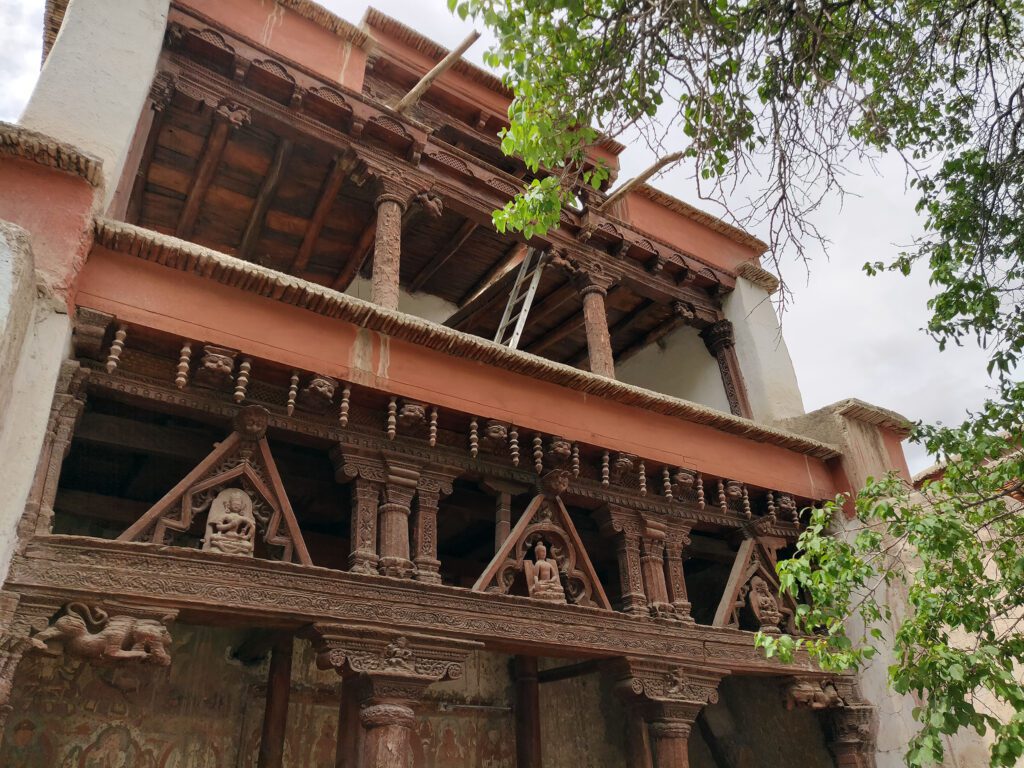
8. Magnetic Hill
Visiting Magnetic Hill is the dream of every adventurer. Almost 27 km from Leh, there appears a yellow signboard after which you park your vehicle inside the marked box and put it in neutral. The alleged magnetic pull will get any vehicle moving uphill even with the engine turned off. Technically, your car itself starts rolling down but since the road appears going up, it will make you believe that the car is going uphill. Every theory you might come up with seems to defy gravity. Optical illusion or reality is something for you to find out when you visit this place.

9. Thiksey Monastery
Located on top of a hill in Thiksey approximately 19 kilometers east of Leh, stands a magnificent structure. Affiliated with the Gelug sect of Tibetan Buddhism, the Thiksey Monestary’s structure has an uncanny resemblance to the Potala Palace in Lhasa, Tibet, and it is the largest gompa in central Ladakh. The 12-storeyed monastery is located at an altitude of 3,600 meters in the Indus Valley and houses over 500 monks. Inside you will find many examples of traditional Buddhist art such as stupas, statues, thangkas, wall paintings, and swords. Another noteworthy point about this monastery is the Maitreya Temple installed within its premises, to commemorate the visit of the 14th Dalai Lama in 1970. The temple holds the largest Maitreya Buddha statue in Ladakh, a 49 ft tall statue occupying two entire storeys of the building!

10. Shey Palace and Monastery
Located 15 km away from Leh on the Leh-Manali highway, this old summer retreat of Ladakhi Kings is a magnificent structure now almost in ruins. The Shey palace is located in the village of the same name and was built in 1655.
Within the premises of this palace is another famous structure – the Shey Monastery. Constructed in the same year as the palace, this monastery is known for the giant gold gilded, copper statue of a seated Shakyamuni Buddha.
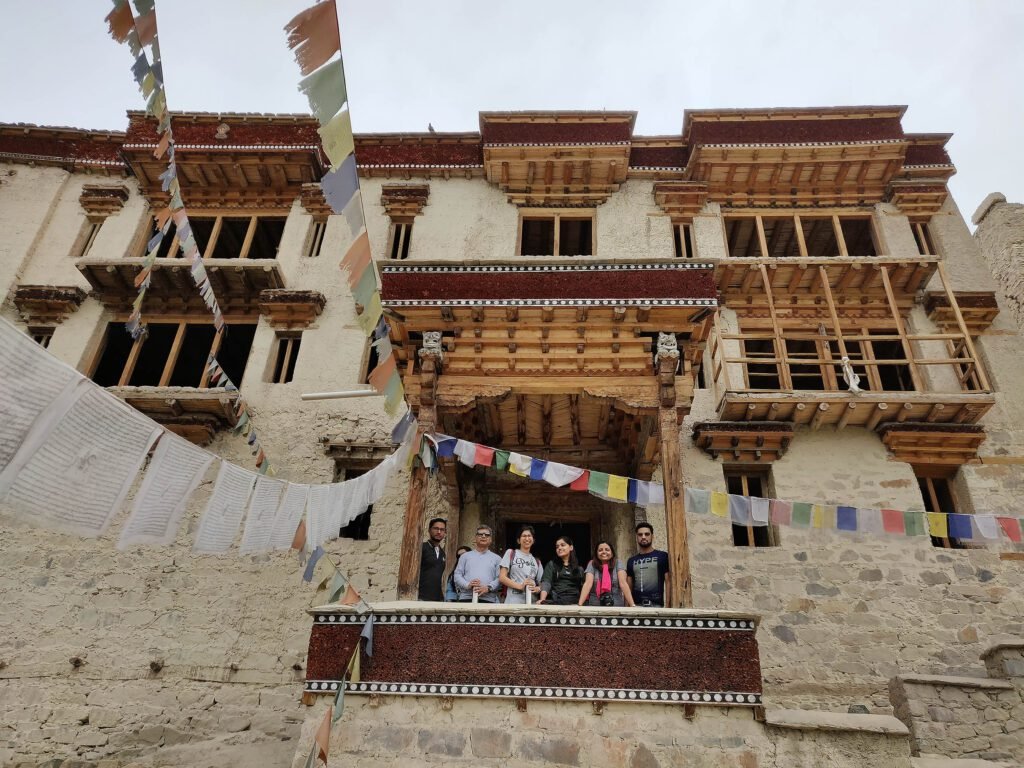
11. Hemis Monastery
The Hemis Monastery is located in the picturesque Hemis village of Ladakh that rests on a mountain on the west bank of the River Indus. Founded in 1630, the monastery is home to a large number of religious treasures such as Thangkas, weapons, carriers, tiger skins, skull vessels, swords, and a stuffed vulture pup which are exhibited during festivals. It’s one of the most beautiful monasteries in Ladakh. The annual Hemis festival honoring Padmasambhava happens here in early June and it’s extremely rich and vibrant. The monastery also has a museum & a gift shop.
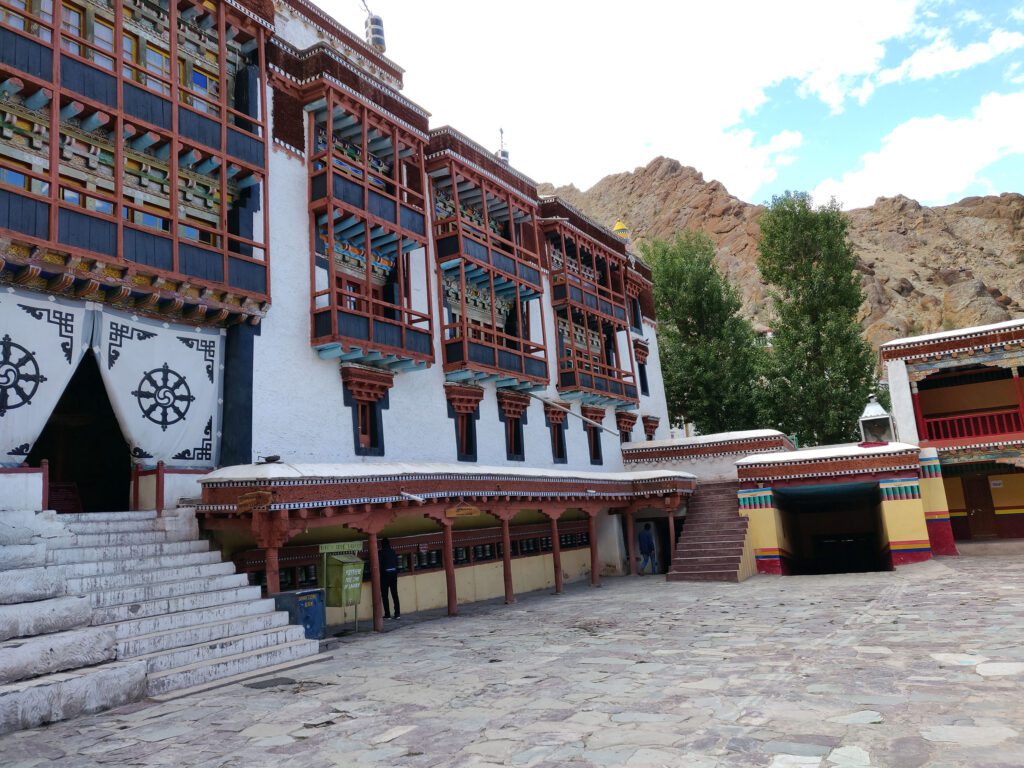
12. Lamayuru Monastery
Almost 127 km from Leh, on the Leh – Srinagar Highway perched at a height of 3,510 meters is the ancient Lamayuru Monastery. Founded by Mahasiddacarya Naropa way back in the 11th century, Lamayuru looks like a monastery forged out of a lunar landscape. The Lamayuru Monastery is the main seat of the Drikung Kagyu tradition (one of the 8 minor lineages of the Kagyu school of Tibetan Buddhism) in the lower Ladakh. There are more than 50 monasteries and 300 monks registered under the leadership of this ancient monastery. The sight of this monastery coupled with the Lamayuru village gives the impression of this tiny kingdom. Did you know that Lamayuru Monastery is often referred to as “moonscape” because it has moonlike craters?
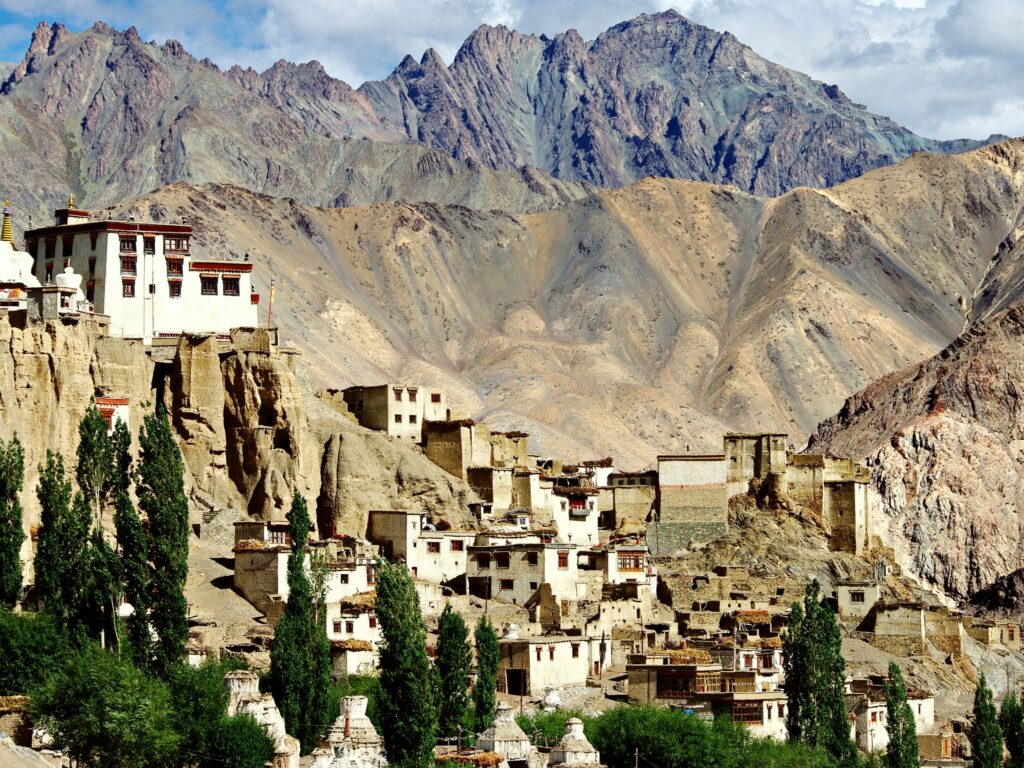
13. Stok Palace and Monastery
The current residence of the erstwhile royal family of Ladakh, the Stok Palace is situated 17 km away from Leh. There is a palace museum with displays showcasing the shrine, crown, ceremonial dress, and jewelry of the Ladakhi king. Now, the Stok Palace has been converted into a beautiful heritage hotel. Stok Palace also houses an interesting museum that has a collection of artifacts and relics related to Ladakh’s old monarchy.
Another 2 km from the palace and you’ll come across the ancient Stok Monastery. This 14th-century Monastery is known for its library that holds all 108 volumes of the Kangyur. Kangyur is a collection of sacred texts containing words spoken by the Buddha himself. Stok Monastery also has a 71 feet tall seated statue of Gautama Buddha. An annual ritual of the dance-mask festival also happens here.
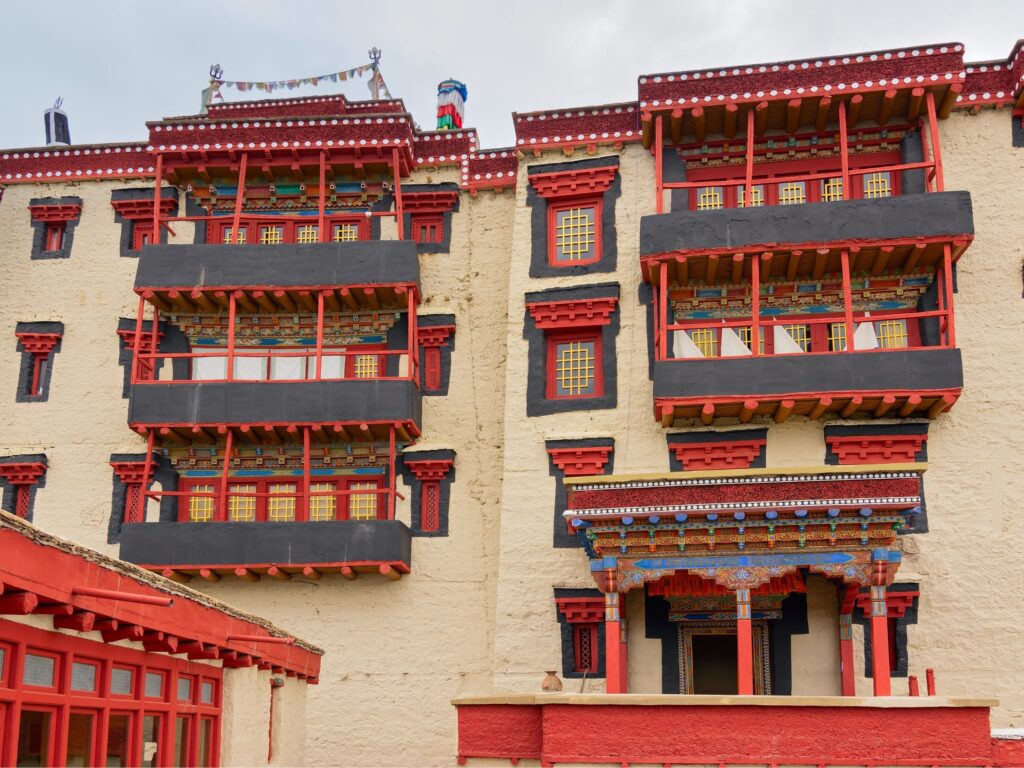
14. Likir Monastery
Built in 1065 A.D, Likir Monastery is a seat of history, which is inscribed on the inner walls in black ink. This beautiful monastery is famous for a 25 feet gold-covered Buddha Statue and certain artifacts that are believed to have been created with butter but never melt. The Likir Monastery is located 56 km west of Leh town and is home to 120 Buddhist monks. It’s an insightful place on the Monastery trail of Leh Ladakh, this colorfully vibrant Monastery has many things to show starting from Thangkas to architecture.
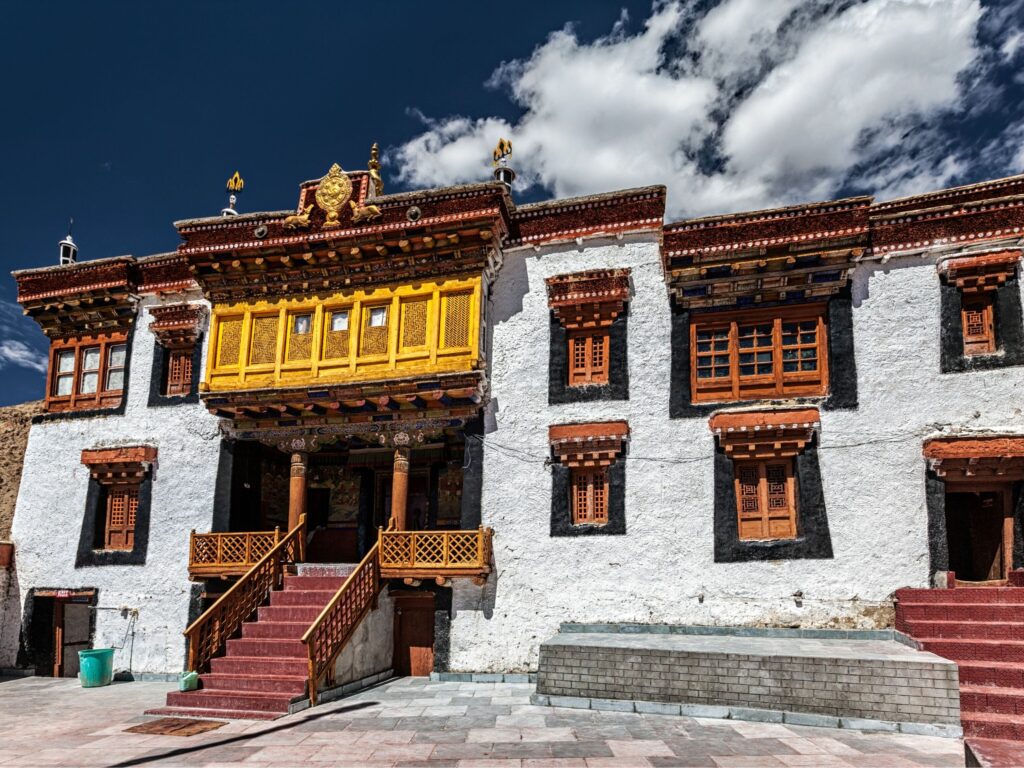
15. Leh Main Bazaar
Quaint Bazaars in hilly regions are always a treat. With cozy shops and rustic eateries, places frequented by so many travelers. All the history contained in those walls and all the stories the people have lived through. You can have some really great traditional cuisines in this place and shop for a variety of accessories and woolen clothes. The business hub of Leh, the streets of the Main Bazaar is always bustling with life and is probably the busiest area in the entire town of Leh. For a place that lives life at a calm and peaceful pace, this bazaar seems to exist on a different planet. You can buy souvenirs from Leh market and also withdraw the much-needed cash from ATMs. Don’t miss enjoying the spicy hot momos and visiting bakeries.
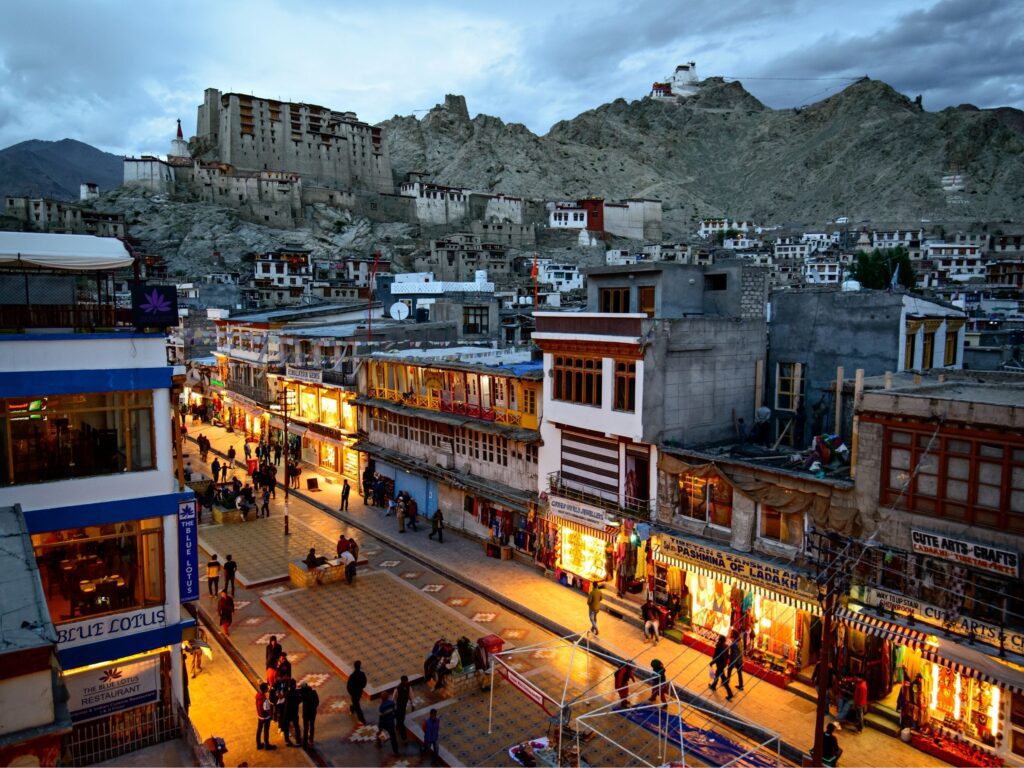
16. Jama Masjid
Built-in the year 1666-67, the Jama Masjid is history in real life. This mosque was a symbol of agreement between the then King of Ladakh, Deldan Namgyal, and Mughal Emperor, Aurangzeb. According to which the Mughals were to provide protection to the King of Ladakh in exchange for a small fee. Located in Leh Main Bazaar, it is the largest mosque in Ladakh and it has been rebuilt several times since its erection.
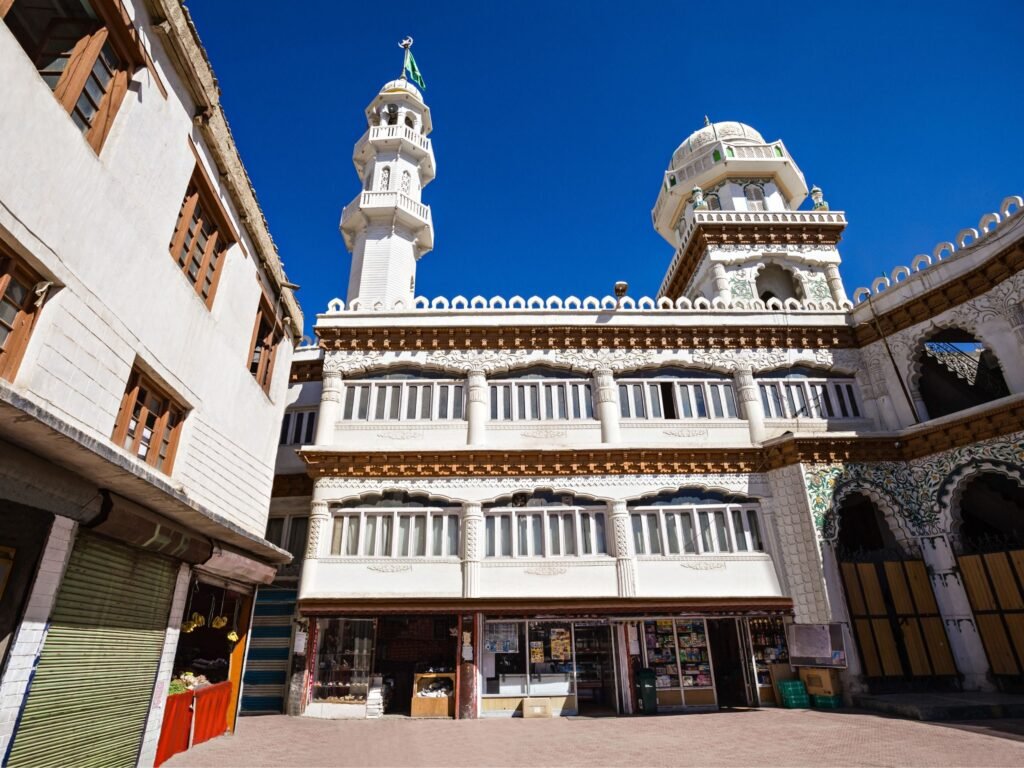
17. Zorawar Fort
About 6.2 kilometers from the Leh Palace, is a fort built by the little Napolean of India – General Zorawar Singh. Once a military base for the Dogra rulers, this fortress is also called the Riasi Fort. Within its premises, there is a mosque, a Hindu temple, and a natural spring. For the History buffs, there is also a collection of coins, stamps, and other artifacts on display. There is also a road from Leh Main Market leading to the fort so you can choose to either drive or take a 30-40 mins hike.
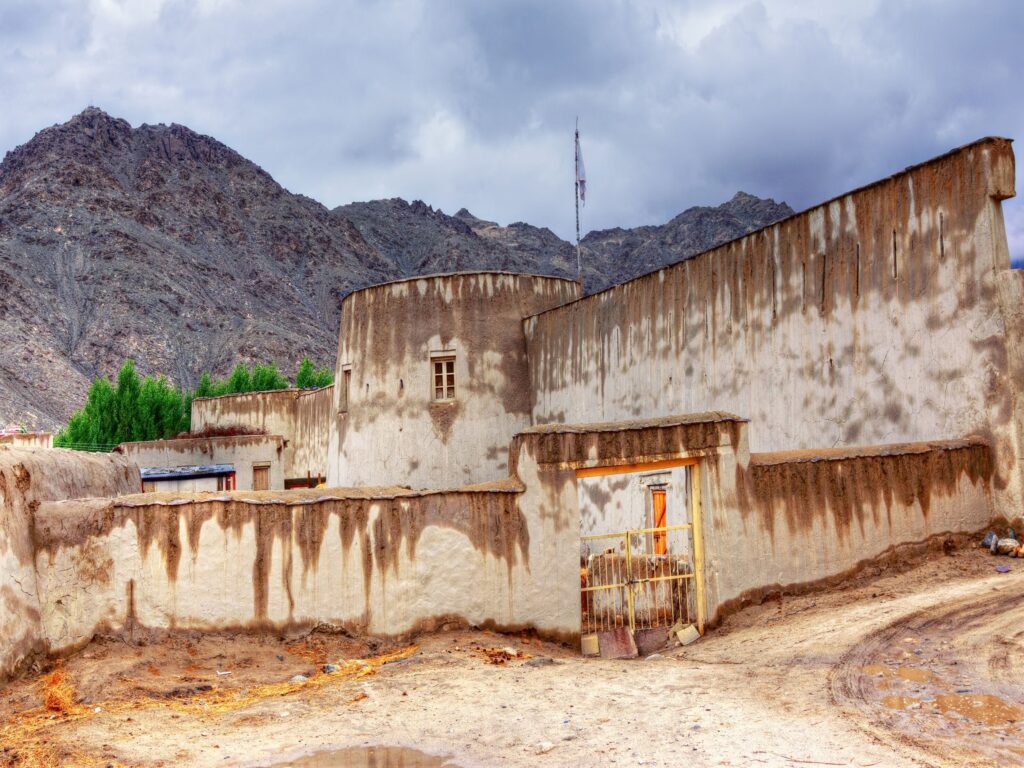
Note:
Please note that above is a very exhaustive list of “Things to do in Leh” and it’s not possible to do everything in and around Leh in a single trip. The mountain terrain and the harsh weather makes it even more challenging. Most of the visitors to Leh only do 1, 2, 3, 4, 6, 8, 10, 11 & 15. If your itinerary is offbeat and experiential, then it may also include 5 & 7 as well. Scroll down, just before last section to see suggested itineraries for a trip to Leh.
Interesting Things about Leh
1. India’s Highest Residential Point of Human Settlement
At 3000 meters above sea level, Leh Ladakh is India’s highest residential point of human settlement. A large portion of the area between the Suru Valley and Zanskar Valley, surrounded by the Himalayas and Zanskar Ranges is rough but largely inhabited. The main area of inhabitation is Rangdum and after crossing Rangdum, at a height of 4,400 m above sea level at Pensi-la is India’s Highest Settlement! Life in this region is certainly arduous but the people make the most of their lives by living peacefully and harmoniously.
2. Highest Bridge above Sea Level in the World – The Bailey Bridge
At a height of about 5,602 meters above sea level, The Bailey Bridge is a 30 meters long lattice-steel giant and the world’s highest bridge above sea level. Built in 1982 by the Indian Army, the name of this bridge is actually the common term used for a type of portable, pre-fabricated, truss bridge first developed by the British during World War II. It was used extensively for military purposes by British, Canadian, and eventually by American military engineering units.
3. The Kung-Fu Nuns of Ladakh
We’ve all seen Monks who’ve mastered Kung Fu in a number of Hollywood and South-East Asian movies but have you ever seen a Kung Fu Nun? The Drukpa Nunnery in Ladakh, almost 100 km from Leh, is home to a large, self-empowered group of women practicing feminist Buddhism and practicing Kung-Fu. This group of women believe in equality and they all study & seek enlightenment on par with monks.
4. Twin-Humped Camels of Nubra Valley
“Are there two camels or only one?” That’s probably the first thought someone would have when they see the Double Humped or Bactrian Camel of the Nubra Valley. These are rare species of camel native to the Steppes of Central Asia and the Nubra Valley in Ladakh is the only place in India where we can them. Their contrasting features from the regular single-humped camel make them a major subject of interest for tourists and visitors to this part of the region. Leh is the getaway to Nubra Valley.
5. The Vibrant Desert
Despite being a cold desert, Ladakh is a rich habitat of Flora and Fauna. From Robins, Finches, Hoopoes, and Redstarts there are over 225 species of birds in this area. You will also find a range of mammals like the Snow Leopard, wild Yaks, Ibex, and rare animals like the Tibetan wild ass, Tibetan antelope, Tibetan gazelle, and Tibetan sand fox among others. With the revival of Buddhist traditions and increasing awareness of the people of this region regarding environmental preservation, the future looks of wildlife in Ladakh looks promising.
Please note that the above-stated facts are just among the few interesting facts about Leh or Ladakh region. Every single place of attraction that we visit in Ladakh, is full of insightfully interesting facts. You can go through our posts on Pangong Lake, Nubra Valley & Tso Moriri Lake to read more interesting facts about Ladakh.
Where to Stay in Leh
Since Leh is the joint capital of Ladakh and also the largest town in the region, hence there is are no shortfalls for accommodation. There is an array of places to choose from depending on your price range or preference. Luxury Hotels, resorts, budget or mid-budget hotels, guesthouses, hostels, homestays, even a few farmhouses – you name it and you probably will find it in Leh. In terms of stay, Leh has everything in every budget. Although, the best place to stay in Leh is to stay in one of the accommodations that are located at a walking distance from Leh Main Bazaar. This will give you the much-required flexibility to you in terms of your evening plans.
Best Time to Visit Leh
The best time to visit any cold place is in the Summer season and Leh is no exception. During the months of June to September, Leh sees summer. The temperature is extremely comfortable to travel around. Ladakh is known for its extremely low temperatures throughout the year but the winters are exceptionally unforgiving. The weather during the winters can get really bad, the roads may be un-motorable due to snowfall or some other sort of natural phenomenon. Therefore, it is most advisable to travel during the summer months to have a smooth trip without any hitches.
Weather in Leh
At an altitude of 3500 meters, the average temperature in Leh reaches 25°C during the day in summer while it dips to -15°C at night in the winter. It can be even colder at a higher altitude and night-time temperatures can drop below 0°C even during summer. If visiting in the summer months, you must also remember that it can get quite dry, therefore it is important that you keep yourself hydrated. It is a must to always take warm clothing when traveling to Leh Ladakh and it is equally important to protect yourself from the strong rays of the sun in this cold desert. If you are traveling to Leh in winter, please carry layers & layers of thermals and other warm clothes. Although, warm clothes are much-needed in summer as well but pack for extreme winter if you travel to Leh in the winter season.
Altitude and Acclimatization in Leh
Acclimatization is the process of our body getting accustomed to a new climate and weather conditions. If you ain’t acclimatized, you are prone to altitude sickness or Acute Mountain Sickness (AMS).
Leh is about 3500 meters above sea level so the air here is thinner than on plains. Hence some travelers, especially the ones who arrive by flight bound to experience altitude sickness. Symptoms like headaches, dizziness, nausea, loss of appetite, insomnia, or shortness of breath are some of the indicators of AMS. When you reach Leh, take maximum rest and keep your excursions light for at least 48 hours to acclimatize yourself. Drink 3–4 liters of water a day to remain hydrated, avoid any kind of alcohol, get enough sleep, and don’t overexert yourself.
Medical Facilities in Leh
There are adequate medical facilities in Leh, therefore you need not worry. The Base hospital in Leh – Sonam Norphel Memorial Hospital is a walkable distance from the main town area and is a five-minute drive from Fort Road. It is fully equipped with the necessary medical facilities and prompt staff is to help patients. Even Nubra Valley and Kargil have proper medical facilities but it is not the same case for most of the other places in Ladakh like Pangong Tso or Tso Moriri. Therefore, make sure to acclimatize yourself properly in Leh itself and take proper precautions during your travels to other places. Also, please understand that during the summer season, the hospital in Leh is crowded with sick tourists overburdening the hospital’s medical staff. Hence, it’s extremely important to be careful about your health, acclimatize properly and follow the instructions of your group leader or guide (if any).
Things to Remember before Planning a Trip to Leh
Cell Service in Leh
The first thing to take note of is that only Postpaid services work in the entire Ladakh. BSNL is the best service provider in Ladakh with the widest area of coverage, followed by Airtel, and Jio. Vodafone and Idea connections work but the coverage is not very good. In Leh town itself, you don’t really have to worry much about connectivity since most areas have pretty good signals. Even the majority of the hotels have WiFi.
What to Pack for Leh
- Thermals (Most essential)
- Comfortable Walking shoes/sports shoes
- Woollen socks
- Heavy woollens like Sweatshirts, pullovers, warm hoodies
- Comfortable trekking/traveling pants or trousers
- A heavy woollen wind-proof jacket or parka is good to carry even during summers in case the weather changes
- Caps or Hats to protect against the suns
- Balaclava or Monkey cap especially for the winter months
- Sunglasses protect your eyes from the reflections from the snow
- Hand gloves are a must during winters or cold nights during summer.
- Carry sunscreen, a first aid kit, and medicine for Acute Altitude Sickness.
- Carry your own water bottle. It’s economic, eco-friendly and you’ll need to keep yourself hydrated constantly.
- Toilet Paper and Wet Tissues
How to Reach Leh
By Road
There are two ways to reach the Leh via road Leh. You can either go to Leh via Manali, Himachal Pradesh, or via Srinagar, Kashmir. Please note that the road journeys to Leh from Kashmir/ Manali offer beautiful sceneries. At the same time, you also get to see how the geographical features are changing gradually. Do remember the duration and length of the journeys make the road trip extremely challenging. Although, it helps you acclimatize gently as compared to air travel.
By Flight
By air, you can come in from Delhi which is a short 1h 25m flight, or any other city, and arrive at the Kushok Bakula Rimpochee airport which is only 4 km from the Leh city center. Leh Airport is connected very well with most of the major airports in India.
Suggested itinerary Leh Itinerary
Please follow the link Adventures of Ladakh (arrival in Leh by road from Manali) and Adventures of Ladakh: Women Only (arrival by flight) links to see two different types of itineraries. We have designed these itineraries in a manner that travelers see the best of the things as per the time in hand while taking the acclimatization factor into consideration. Hence, you can use these itineraries blindly.
Note:
If you are a solo traveler then you can also consider joining our group tours. We organize a mixed group tour to Ladakh and a women-only trip as well to Ladakh. If you want a customized tour package for Ladakh for yourself, then you can reach out to us for the same as well. Please call/ WhatsApp at 9999749677 or email at chandni@transformingtravels.com
How to be an ambassador of Responsible Tourism in Leh?
You can be a Responsible Tourism ambassador in Leh by following a very simple behavior:
- Don’t litter around
- Please maintain silence inside the monasteries
- Please respect the terrain of Ladakh. In case of any visit outside Leh, make sure to always hit the Leh roads before sunset. Driving on mountain roads especially in remote and tough terrain in Leh brings many unforeseen risks.
- Don’t run around or exhaust yourselves. Don’t drink alcohol or do anything else that would lead to AMS.
- Ladakh is a desert area. Hence, please save water during your stay in not just Leh, but the entire Ladakh.
- Be respectful to locals
The above tips are specific to Leh. You can read this article in order to understand more about the practices of responsible tourism that would help you in the longer term.
Conclusion
A trip to Ladakh is of the most memorable trips for any traveler. And, for any trip to Ladakh, you would always begin with Leh as the starting point. It is the heart of Ladakh in all senses. You are definitely in for a lifetime experience on your trip to Leh or Ladakh but just to remember to research & plan well. Acclimatize and respect the terrain. Just follow this detailed guide and you shall be fine.


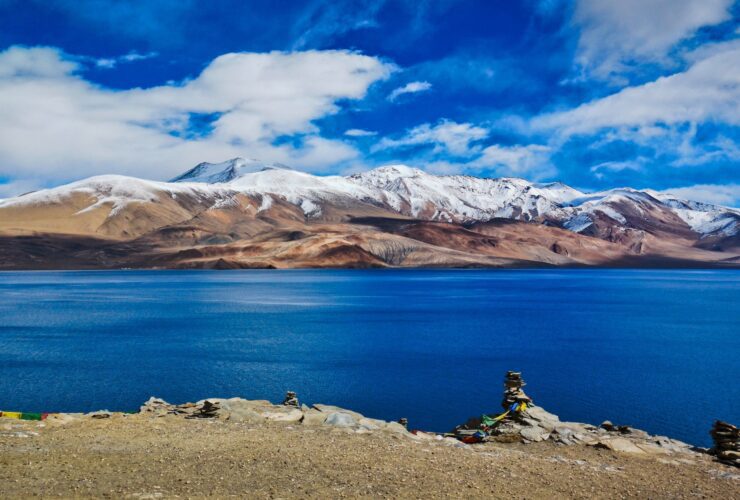

Plz let me know dates Leh I am ready to join
Along with spiti